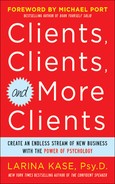What Determines Credibility?
,Do you know whether you’re perceived as credible? Let’s look into the factors that make up credibility.
The four types
In the early 1950s, Yale University researchers Carl Hovland, Irving Janis, and Harold Kelley created a model to explain what makes a message be perceived as credible. They found that credibility resulted from a perception of the communicator’s trustworthiness and expertise.
More recently, researcher B.J. Fogg expanded the model to include four key types:
1. Presumed. This type of credibility is based on ideas and assumptions people hold.
2. Reputed. This is based on other people’s experiences and can be seen through testimonials, referrals, and endorsements.
3. Surface. This is based on initial observation and first impressions and tends to be visual in nature.
4. Earned. This is based on our own experiences with something or someone and develops over time.
In 2007, Maria Mattus of Linköping University, Sweden, set out to determine how Fogg’s four types of credibility came into play as students evaluated the credibility of scientific information on the Web. The four elements that students rated as most important actually fell into each of Fogg’s four categories: whether the author of the paper was an established researcher (presumed credibility), teachers’ recommendations (reputed credibility), the year of publication (surface credibility), and their experience of the abstract (earned credibility). Thus, it appears that all four of these types of credibility come into play as students evaluate information online, and are likely to come into play as people evaluate us online.
Credibility on the Web
When you meet a new business contact, one of the first things she will do is look you up online. Most likely the first site she will find is your Web site. How long does it take for people to form an impression of your Web site? According to research by Gitte Lindgaard and her colleagues at Carleton University in Canada, the length of time is almost impossible to conceive—50 milliseconds. This is equal to about one-twentieth of a second. Most people do not have any conscious thought process during this length of time.
Do you know what people would think if your Web site flashed by them for one-twentieth of a second? Our goal of course is to make them think—or, more accurately, feel—something positive. You also want to feel something positive about your site. I recently had my sites and social media graphics redesigned by One Lily Creative Agency, and now I love the way they look and I feel proud to share them.
Stanford University’s Persuasive Technology Lab, in collaboration with Sliced Bread Design LLC and Consumer Reports WebWatch, set out to discover what aspects of Web sites people deem as credible or not. This study was the first to determine what people notice about Web sites and how those things impact their feelings about the site.
A creative recruitment method, where nonprofit groups let their supporters know that their participation in this study would result in a $5 donation, resulted in 2,684 people participating. Participants were randomly assigned to one of 10 content categories: e-commerce, entertainment, finance, health, news, nonprofit, opinion, search engine, sports, or travel. They were then given two Web sites in their category and asked to rank them and provide comments. The results yielded 2,440 comments that were sorted into different categories.
The Most Important Measures of Credibility
• 46.1 percent: Design look. This is related to the overall professionalism and look and feel of the site.
• 28.5 percent: Information design and structure. How organized and easy to navigate the site is.
• 25.1 percent: Information focus. Some respondents showed preference for simple and narrowly focused information while others appreciated breadth of information provided.
• 15.5 percent: Company motive. Sites that seemed to have selling something as the only motive lost credibility in ratings.
• 14.8 percent: Information usefulness. This category was most important for health and entertainment sites and least important for sports and nonprofit sites.
• 14.3 percent: Information accuracy. People assessed whether the information was consistent with what they knew from previous readings and television reports.
• 14.1 percent: Name recognition and reputation. Greater familiarity led to a greater sense of perceived credibility.
As you can see from the data, the look of the site was the most important factor, which was prioritized a bit more often with the sites in finance (54.6 percent), search engines (52.6 percent), and travel (50.5 percent) versus news (39.6 percent) and nonprofit (39.4 percent) sites. Many of us like to think that design is not that important so we don’t have to hire a professional design firm, but it turns out to be the most important factor in determining whether or not your site and you are perceived as credible.
